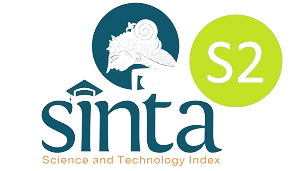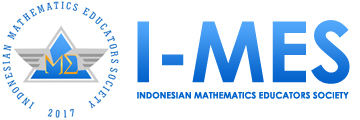Students' Quantitative Literacy in Solving PISA Problem Based on Gender Differences
DOI:
https://doi.org/10.29408/jel.v7i2.3557Keywords:
female student, male student, PISA problem, quantitative literacyAbstract
Quantitative literacy is an important skill needed by individuals in solving problems with quantitative situations in daily life. Thus, this paper aimed to identify quantitative literacy in solving the PISA problem based on gender differences. This study used descriptive research with a qualitative approach. Research subjects in this study were two tenth-grade students in middle school. They were one male student and one female student who have the similar mathematical ability. Data were collected by giving the Program for International Student Assessment (PISA) problem, especially mathematical literacy, and using the interview method. The research results showed that the quantitative literacy of male student in solving PISA problems is by using fewless symbols to represent time and incomplete algorithms and procedures. In comparison, the quantitative literacy of female student in solving PISA problems is by using a more detailed description, more mathematical operations, and solving the problem according to algorithms and procedures. Furthermore, both students have quantitative literacy aspects, including interpretation, calculation, representation, assumption, analysis, and communication skills. Therefore, the quantitative literacy ability of students can be used as a reference for teachers to determine the modeling activities conducted by students in solving the PISA problem.References
Anggara, D. S., Kadir, & Haribowo, H. (2021). Content validity analysis on mathematical quantitative literacy instruments in elementary schools. Journal of Physics: Conference Series, 1918(4), 042091. https://doi.org/10.1088/1742-6596/1918/4/042091.
Annizar, M., Maulyda, A., Khairunnisa, F., & Hijriani, L. (2020). Kemampuan pemecahan masalah matematis siswa dalam menyelesaikan soal PISA pada topik geometri. Jurnal Elemen, 6(1), 39-55. https://doi.org/10.29408/jel.v6i1.1688.
Azizi, R. (2017). Literasi matematika tingkat sekolah menengah pertama mengacu pada PISA (Programme for International Student Assessment) ditinjau dari gender. In Universitas Nusantara PGRI Kediri (Vol. 13). Kediri: Universitas Nusantara PGRI Kediri.
Bench, S. W., Lench, H. C., Liew, J., Miner, K., & Flores, S. A. (2015). Gender gaps in overestimation of math performance. Sex Roles, 72(11-12), 536-546. https://doi.org/10.1007/s11199-015-0486-9.
Boersma, S., & Klyve, D. (2013). Measuring habits of mind: Toward a prompt-less instrument for assessing quantitative literacy. Numeracy, 6(1), 1-14. https://doi.org/10.5038/1936-4660.6.1.6.
Fatmawati, A. (2019). Kemampuan literasi kuantitatif siswa kelas X ditinjau dari gaya kognitif. Prosiding Seminar Nasional Pendidikan Matematika, Universitas Muhammadiyah Malang.
Frith, V., & Prince, R. (2018). The National benchmark quantitative literacy test for applicants to South African higher education. Numeracy, 11(2), 1-25. https://doi.org/10.5038/1936-4660.11.2.3.
Hains, D., Intindola, M., Lepisto, D., & Wagner, B. (2019). Scrimmage! Teaching quantitative literacy through a multidimensional simulation. International Journal of Management Education, 17(1), 119–129. https://doi.org/10.1016/j.ijme.2019.01.002.
Karaali, G., Villafane-Hernandez, E., & Taylor, J. (2016). What’s in a name? A critical review of definitions of quantitative literacy, numeracy, and quantitative reasoning. Numeracy, 9(1), 1-34. https://doi.org/10.5038/1936-4660.9.1.2.
Karmila. (2018). Deskripsi kemampuan literasi matematis siswa ditinjau dari gender. Pedagogy, 3(1), 126-137.
Klug, J. L., Carey, C. C., Richardson, D. C., & Gougis, R. D. (2017). Analysis of high-frequency and long-term data in undergraduate ecology classes improves quantitative literacy. Ecosphere, 8(3), 1-13. https://doi.org/10.1002/ecs2.1733.
Lange, J. de. (2006). Mathematical literacy for living from OECD-PISA. Tsukuba Journal of Educational Study in Mathematics, 25(September), 13–35.
Lestariningsih, L., Amin, S. ., Lukito, A., & Lutfianto, M. (2018). Mathematisation of preservice teacher in solving higher order thinking problem. 160 (Incomed 2017), 291–294. https://doi.org/10.2991/incomed-17.2018.62.
Lestariningsih, L., Nurhayati, E., Susilo, T. A. B., Cicinidia, C., & Lutfianto, M. (2020). Development of mathematical literacy problems to empower students’ representation. Journal of Physics: Conference Series, 1464(1), 012018. https://doi.org/10.1088/1742-6596/1464/1/012018.
Lestariningsih, Nurhayati, E., & Lutfianto, M. (2020). Students’ thinking process in solving mathematical literacy problem with space and shape content. Journal of Physics: Conference Series, 1470(1), 012039. https://doi.org/10.1088/1742-6596/1470/1/012039.
Lindner, A. M. (2012). Teaching quantitative literacy through a regression analysis of exam performance. Teaching Sociology, 40(1), 50–59. https://doi.org/10.1177/0092055X11430401.
Miles, M. B., Huberman, A. M., & Saldaña, J. (2019). Qualitative data analysis. In Qualitative Data Analysis: A Methods Sourcebook. https://doi.org/10.4324/9781315701134-11.
Nye, P., & Hillyard, C. (2013). Personal financial behavior: The influence of quantitative literacy and material values. Numeracy, 6(1), 1-24. https://doi.org/10.5038/1936-4660.6.1.3.
OECD. (2019a). PISA 2018 assessment and analytical framework. In OECD Publishing. https://doi.org/10.1787/b25efab8-en.
OECD. (2019b). PISA 2018 results combined executive summaries. In PISA 2009 at a Glance. https://doi.org/10.1787/g222d18af-en.
Reilly, D. (2012). Gender, culture , and sex-typed cognitive abilities. PloS One, 7(7), 22808072. https://doi.org/10.1371/journal.pone.0039904.
Roohr, K. C., Graf, E. A., & Liu, O. L. (2014). Assessing quantitative literacy in higher education: An overview of existing research and assessments with recommendations for next-generation assessment. ETS Research Report Series, 2014(2), 1–26. https://doi.org/10.1002/ets2.12024.
Srimuliati, S. (2018). Profil literasi kuantitatif mahasiswa matematika FTIK IAIN Langsa. At-Tafkir, 11(1), 100–116. https://doi.org/10.32505/at.v11i1.530.
Steen, A. (2001). Mathematics and democracy: The case for quantitative literacy. Princeton, NJ: National Council on Education and the Disciplines and Woodrow Wilson Foundation.
Vacher, H. L. (2014). Looking at the multiple meanings of numeracy, quantitative literacy, and quantitative reasoning. Numeracy, 7(2), 1-14. https://doi.org/10.5038/1936-4660.7.2.1.
Wallace, D. (2019). Three formative questions in the quantitative literacy movement. Numeracy, 12(1), 1-8. https://doi.org/10.5038/1936-4660.12.1.13.
Downloads
Published
How to Cite
Issue
Section
License
Authors who publish with the Jurnal Elemen agree to the following terms:
- Authors retain copyright and grant the journal right of first publication with the work simultaneously licensed under Creative Commons Attribution-ShareAlike 4.0 International License (CC BY-SA 4.0).
- Authors are able to enter into separate, additional contractual arrangements for the distribution of the journal's published version of the work (e.g., post it to an institutional repository or publish it in a book), with an acknowledgment of its initial publication in this journal.
- Authors are permitted and encouraged to post their work online (e.g., in institutional repositories or on their website) prior to and during the submission process, as it can lead to productive exchanges, as well as earlier and greater citation of published work.
Jurnal Elemen is licensed under a Creative Commons Attribution-ShareAlike 4.0 International License





